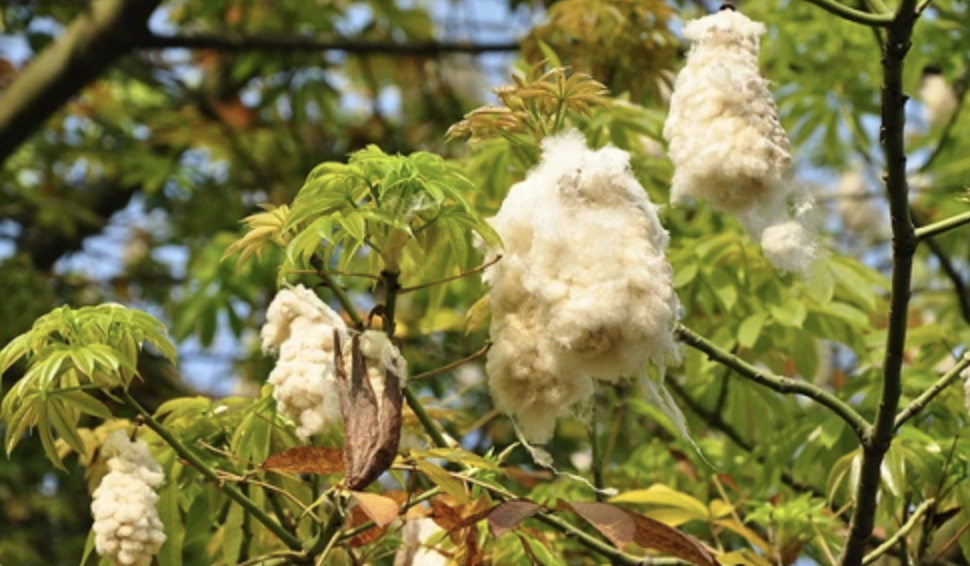Singapore has become one of the top textile markets in Southeast Asia. The major segments in the market are cotton fabric, technical textiles, and non-woven fabrics (World Integrated Trade Solutions, 2021). However, some of Singapore’s fibers and textile production are imported from outside of the country. The production is mostly done in nearby Asian regions like Malaysia or China, due to the lower costs (Grunsven & Smakman, 2019). Cotton is a natural fiber that comes from the seedpods of the cotton plant (Textile Exchange, 2022). Cotton is a popular material because of its softness, breathability, and absorbency. It is also adaptable and can be combined with different fibers to improve the final fabric. It is also the top material used in the production of batik sarongs for traditional clothing.

Figure 6: Singapore Kapok or cotton tree
In Singapore, the largest selling apparel market is women’s clothing. In 2023, the women’s market generated a revenue of $1.36 billion U.S. dollars (Statistica, 2023). Even while labor productivity in Asia’s apparel industry has increased recently, it is still low when compared to other manufacturing sectors (International Labour Organization, 2022). Since 2004, Singapore’s Apparel production has been following the rules of origin apparel agreement. It is a law between Singapore and the United States. The rules of origin textiles and apparel agreement states yarn production has to be made in either country, and the fiber could be produced from anywhere (International Trade Administration, 2023).


